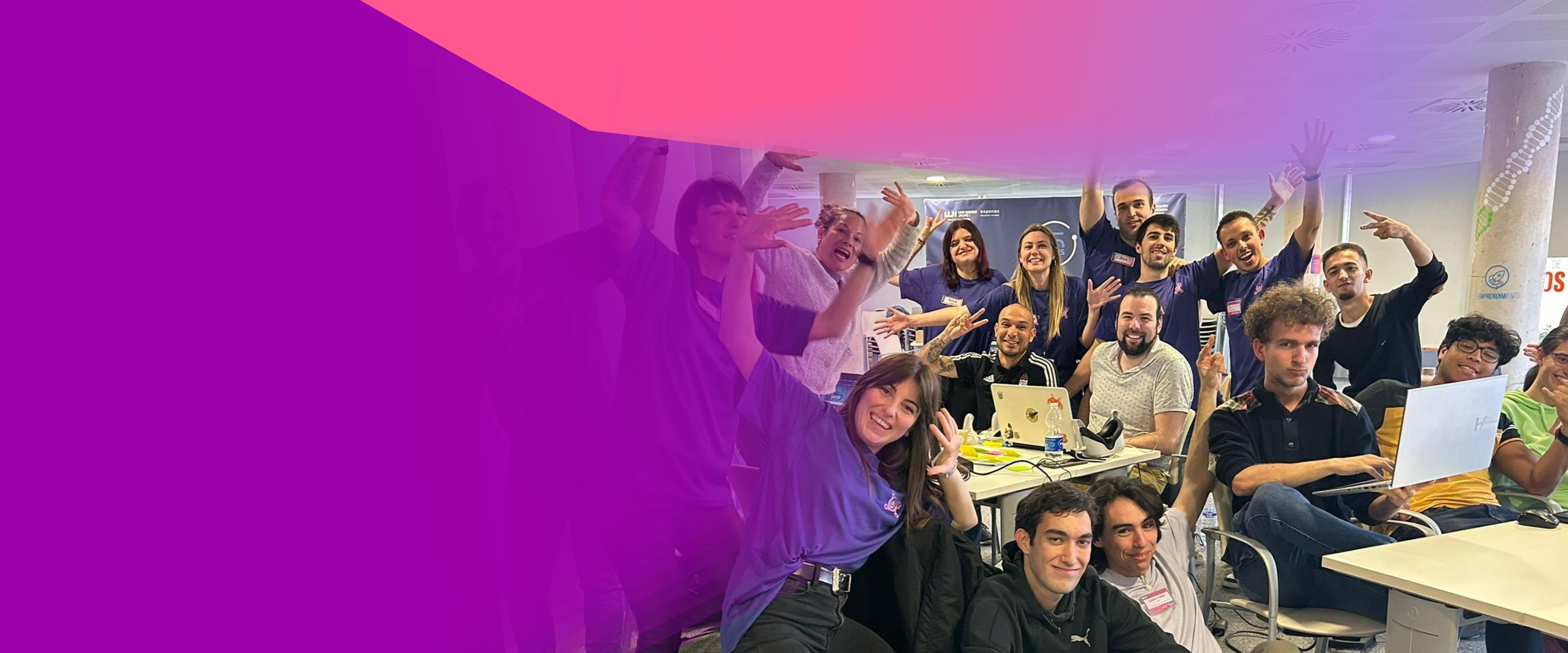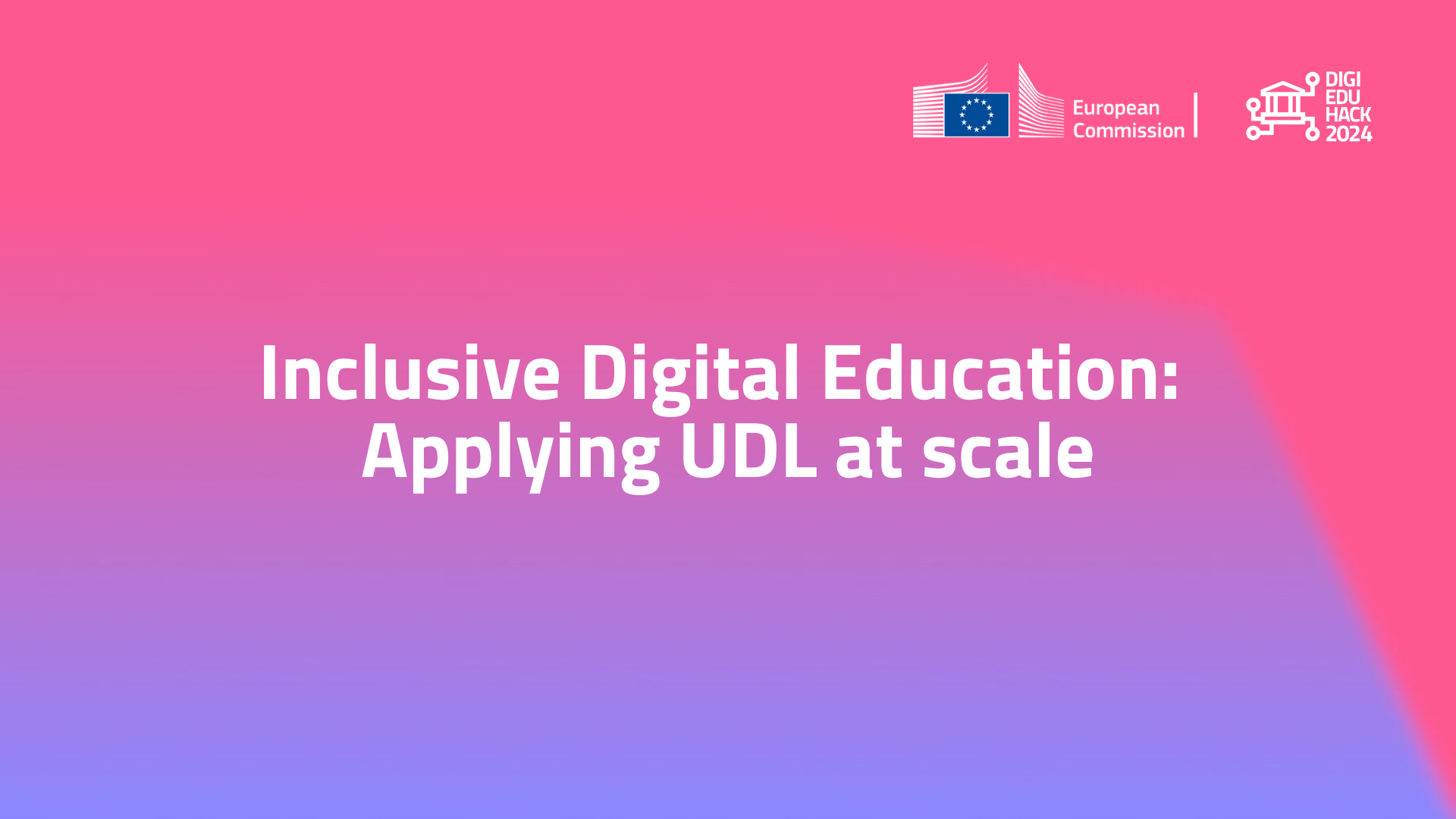Inclusive Digital Education: Applying UDL at scale
Universal Design for Learning (UDL) is an educational framework that guides the design of learning environments to be accessible and effective for all students. It offers educators flexible approaches to designing teaching materials that provide learners with different approaches to represent, express and engage with information.
While UDL's principles are well-established, scaling these inclusive practices across diverse European education systems presents a complex challenge: how do you maintain universal accessibility while respecting local contexts, languages, and pedagogical traditions?
The fourth webinar of the DigiEduHack 2025 series explored these scaling challenges through real-world examples of how different European countries are adapting UDL principles to their unique educational landscapes.
Lessons from four EU countries show that UDL works best when different needs are balanced - standardisation and flexibility, technology and teaching, national priorities and local innovation. UDL in National Digital Education Strategies
Different national strategies across Europe hold a common truth: universal design must be locally adapted to be truly inclusive. The challenge lies not in applying identical solutions everywhere, but in translating core accessibility principles to fit diverse educational contexts, demographic needs, and cultural expectations.
As Božena Vrgoc (STEAM Institute Zagreb, Croatia) explained, Croatia's approach illustrates how UDL implementation must address multiple dimensions of diversity simultaneously. For early childhood education, she mentioned that inclusion is a core competence for teachers. Regarding the STEM, she mentioned it in the context of her own work as fruitful ground for UDL principles as it's very practical.
On the different needs, this is something she mentioned which was very important - that UDL is for all learners, not only those who have special needs or gifted learners. It was very interesting to hear how she presented, for instance, the different approaches to assessment as not only tools of inclusivity, but also that teachers can test their students' knowledge in different contexts.
Michalis Spyropoulos (LMDDC, Luxembourg) highlighted Luxembourg’s unique multilingual and multicultural context, explaining how UDL is integrated to support inclusion. He also underscored the importance of European-level funding and public–private partnerships like LMDDC in ensuring that inclusive innovations can be scaled across borders. But how can cross-border partnerships and funding help scale inclusive digital strategies, like Luxembourg’s UDL approach, to other diverse contexts?
Tools, Technologies, and Grassroots Innovation
When technology serves as the bridge to inclusive education, two distinct approaches emerge: building accessibility into existing tools versus designing inclusion from the ground up. Webinar speakers’ experiences reveal that both strategies have merit, but they require different resources, timelines, and institutional commitments.
In Estonia, digital education is not just about technology, it’s about belonging. Liis Siiroja (EdTech Estonia) described how the country’s national strategy helps multilingual families navigate language learning in inclusive ways. She highlighted how true impact comes when EdTech startups build UDL principles into their platforms from the start, so that every learner can see themselves reflected and supported on their learning journey. Parallelly, a cornerstone of Estonia’s work on AI literacy is the recognition that schools and teachers must have autonomy in choosing tools tailored to their classroom needs.
In Spain, robotics and AI are becoming powerful tools for inclusive STEM education. Jose María Cañas Plaza (Universidad Rey Juan Carlos, Spain) shared how applying UDL principles to technical fields like programming remains challenging. Fortunately, there are initiatives like JdeRobot which are breaking barriers by creating accessible, open-source robotics resources for diverse learners. But how might we ensure that such innovations reach and empower all students, regardless of background or ability?
Co-Creation, Hackathons, and the Future of UDL
In the final roundtable, all speakers reflected on the future of inclusive digital education. Božena Vrgoč highlighted the value of hackathons and co-creation initiatives for generating practical solutions. Michalis Spyropoulos anticipated future UDL developments in Europe that focus on scaling equity-driven innovation through policy. Liis Siiroja offered advice to users, encouraging them to be involved from the start, while José María Cañas Plaza emphasised the role of EU projects and hackathons in co-designing inclusive digital tools for complex disciplines. Across the discussion, the panel agreed that the future of UDL will depend on hybrid models that combine technological innovation with human-led guidance. This hybrid approach recognizes a fundamental insight from the 4th webinar: sustainable UDL scaling requires both resources and policy support as well as the creativity and user-centeredness that emerge from grassroots innovation.
Watch the full webinar online to hear these experts share detailed case studies, practical frameworks, and useful actionable strategies in digital education.
Want to Rethink Education with Us?
DigiEduHack 2025 is looking for hackathon hosts across schools, universities, and companies. Explore how you can get involved, design your own hackathon challenges, and shape the future of learning. Register to host by 20 October!

